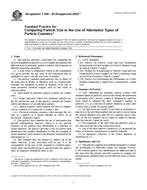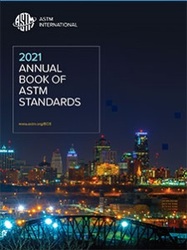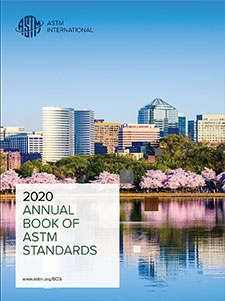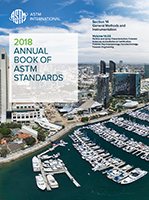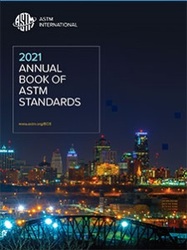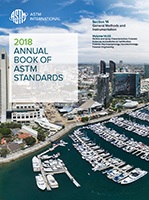Description
1.1 This practice provides a procedure for comparing the sizes of nonspherical particles in a test sample determined with different types of automatic particle counters, which operate on different measuring principles.
1.2 A scale factor is obtained by which, in the examination of a given powder, the size scale of one instrument may be multiplied to agree with the size scale of another.
1.3 The practice considers rigid particles, free of fibers, of the kind used in studies of filtration, such as: commercially available test standards of quartz or alumina, or fly ash, or some powdered chemical reagent, such as iron oxide or calcium sulfate.
1.4 Three kinds of automatic particle counters are considered:
1.4.1 Image analyzers, which view stationary particles under the microscope and, in this practice, measure the longest end-to-end distance of an individual particle.
1.4.2 Optical counters, which measure the area of a shadow cast by a particle as it passes by a window; and
1.4.3 Electrical resistance counters, which measure the volume of a particle as it passes through an orifice in an electrically conductive liquid.
1.5 This practice also considers the use of instruments that provide sedimentation analyses, which is to say provide measures of the particle mass distribution as a function of Stokes diameter. The practice provides a way to convert mass distribution into number distribution so that the meaning of Stokes diameter can be related to the diameter measured by the instruments in 1.4.
1.6 This standard does not purport to address all of the safety concerns, if any, associated with its use. It is the responsibility of the user of this standard to establish appropriate safety and health practices and determine the applicability of regulatory limitations prior to use.
Product Details
- Published:
- 01/01/2002
- Number of Pages:
- 5
- File Size:
- 1 file , 61 KB

